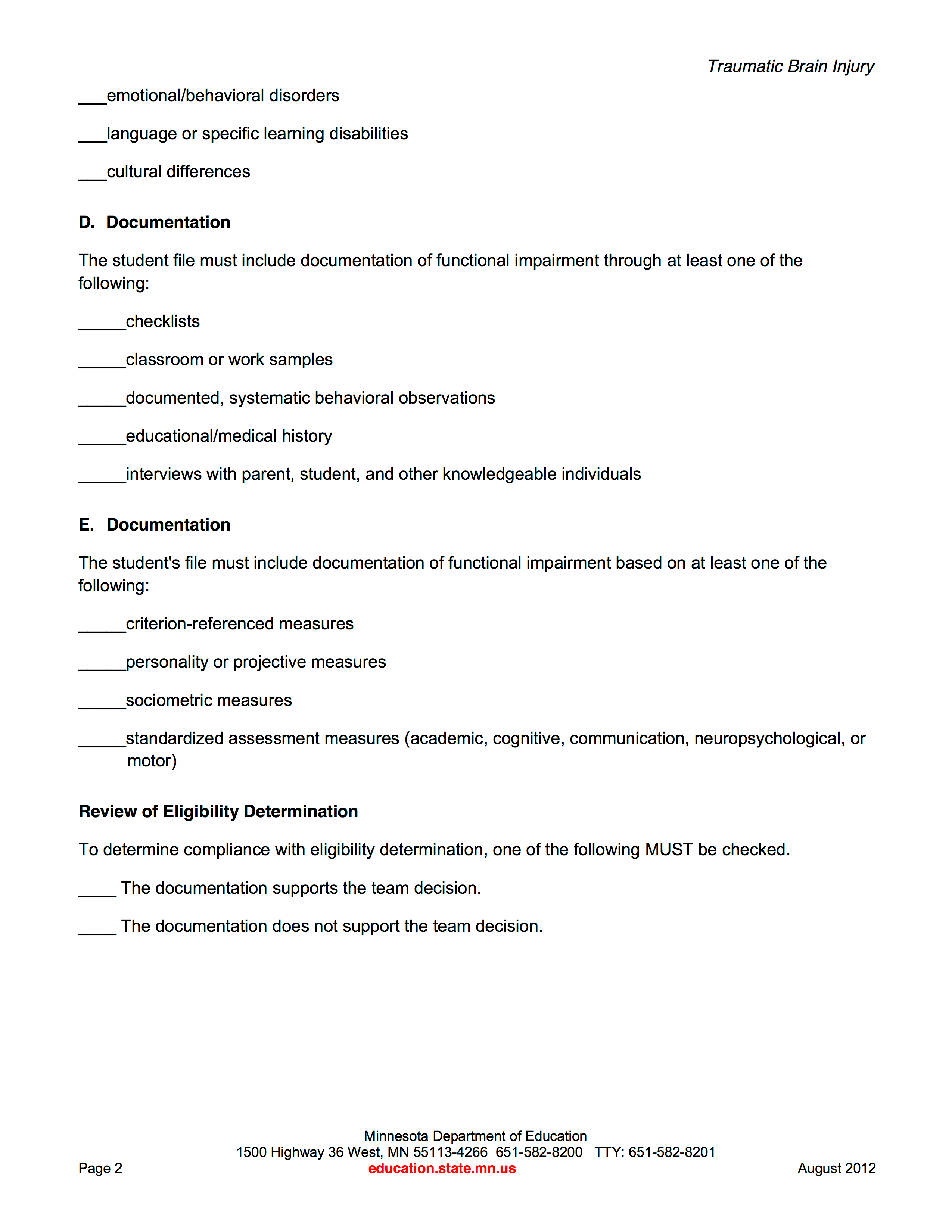
Traumatic Brain Injury
Disability Label & Prevalence |
Definition |
General Characteristics |
Identification & Assessment |
Educational Approaches |
Educational Placement Alternatives |
Traumatic Brain Injury 24,395 students in 2009-2010 |
IDEA – An acquired injury to the brain caused by an external physical force, resulting in total or partial functional disability or psychosocial impairment, or both, that adversely affects a child's educational performance. The term applies to open or closed head injuries resulting in impairments in one or more areas, such as cognition; language; memory; attention; reasoning; abstract thinking; judgment; problem-solving; sensory, perceptual, and motor abilities; psychosocial behavior; physical functions; information processing; and speech. The term does not include brain injuries that are congenital or degenerative, or brain injuries induced by birth trauma. |
Could exhibit: Physical and sensory changes (examples: lack of coordination, spasticity of muscles) Cognitive impairments (examples: short- and long-term memory deficits, difficulty maintaining attention, language problems) Social, behavioral, and emotional problems (examples: mood swings, self-centeredness, lack of motivation) |
Identified after traumatic incidence by medical doctor. |
Students should be taught: functionality, age-appropriateness, communication, literacy, recreation and leisure, making choices, access to general education curriculum, selecting and prioritizing instructional targets. |
General Education Classroom Resource Room Programs Separate Classrooms Special schools Residential Facilities Home/Hospital |
Description of 2 evidence-based strategies |
Cognitive Rehabilitation: a systematic, functionally oriented service of therapeutic activities that is based on assessment an understanding of the brain’s behavior deficits. Specific interventions my have various approaches, including: reinforcing, strengthen or reestablishing previously learned patterns of behavior; establishing new patterns of cognitively active through compensatory cognitive mechanisms for impaired neurologic systems; establishing new patterns on activity through external compensatory mechanisms such as personal orthoses or environmental structuring and support; enabling persons to adapt to their cognitive disability, even though it may not be possible to directly modify or compensate for cognitive impairments, in order to improve their overall level of functioning and quality of life (Keith D. Cicerone, et al., 2000) Direct Instruction: a comprehensive, explicit, instructional method shown to be effective in teaching a wide range of materials across different populations, particularly individuals with learning disabilities. Requires the systematic design and delivery of instruction to facilitate efficient skill acquisition and generalization (McKay Moore Sohlberg, Laurie Ehlhardt, & Mary Kennedy). |
Practitioner Based Article related to this area: Include reference and summary of the article. |
Academic and language outcomes at different time points post-traumatic brain injury (TBI) in children and adolescents. Although children with mild TBI exhibited no significant deficits, studies indicate that children with moderate and severe TBI exhibit persistent deficits. In children with moderate TBI, academic skills were impaired both post acutely and chronically although there were no deficits in language skills at any time point. Children with severe TBI showed the most impairment, with deficits in all measured areas, and partial recovery in some domains over time. The results of this meta-analysis may have important implications for school reentry, academic placement, and identifying children who require special services in school (Vu, Babikian, & Asarnow, 2011) |
MN Eligibility Checklist

